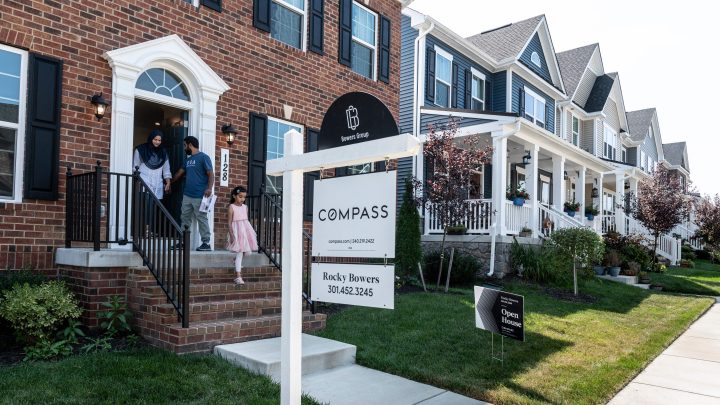
Mortgage payment on a typical home nearly doubled in last 4 years, report finds
Mortgage payment on a typical home nearly doubled in last 4 years, report finds

In case you needed more evidence to explain why U.S. consumers aren’t exactly cheering in the stands for this all-in-all pretty-good economy, let’s look at exhibit one: housing affordability.
The real estate firm Zillow reports that since January 2020, the monthly mortgage payment on a typical U.S. home has nearly doubled. It’s up 96% in just four years.
According to Zillow, a typical buyer will now pay nearly $2,200 a month, with a 10% down payment. Meaning, homeownership now costs well above the 30% of median income that was once thought to equate to “affordable” housing cost in America.
And with the 30-year fixed-rate mortgage hovering around seven percent right now, there’s not a whole lot of light at the end of this tunnel.
With prices rising by leaps and bounds, it’s been a good time to sell a home. But it’s not so great to try to buy, says Orphe Divounguy, senior economist at Zillow.
“After the surge in home-buying demand and mobility during the pandemic, and the doubling of mortgage rates, home-shoppers now need to earn $106,000 to afford the median home in the United States,” said Divounguy.
Back in 2020, the salary needed to afford the median monthly mortgage payment was just $59,000. Real estate broker Israel Hill has seen the affordability crunch in Portland, Oregon.
“There’s nowhere to go, right? I mean, the prices aren’t dropping because there’s no inventory,” said Hill.
With mortgage rates around seven percent, many homeowners don’t want to sell and give up their cheaper mortgages. So, for would-be buyers, “there’s a sticker shock, for sure, trying to figure out how they’re going to make that monthly payment. And some people have to put themselves on the sidelines,” said Hill.
Others, says Zillow’s Divounguy, are getting creative.
“Half of first-time homebuyers are getting help from family and friends to at least get the down payment, 21% of last year’s buyers reported co-buying, so they’re buying with a friend or family member,” said Divounguy.
The news is not all gloom and doom, says Eddie Seiler at the Mortgage Bankers Association.
“Interest rates should come down steadily. Hopefully we’ll end the year at around six percent,” said Seiler.
And, in time, that probably won’t seem so expensive.
Guy Cecala at Inside Mortgage Finance, points out that in the years before the pandemic, consumers got used to really low mortgage rates.
“Unfortunately, a lot of people felt that was normal, and that anything above that they should just wait until they go back to the three and a half, four percent range. And that is not a realistic expectation,” said Cecala.
Cecala says mortgage rates have historically hovered around five to six percent in a healthy economy, and homebuyers will just need to get used to that.
There’s a lot happening in the world. Through it all, Marketplace is here for you.
You rely on Marketplace to break down the world’s events and tell you how it affects you in a fact-based, approachable way. We rely on your financial support to keep making that possible.
Your donation today powers the independent journalism that you rely on. For just $5/month, you can help sustain Marketplace so we can keep reporting on the things that matter to you.











